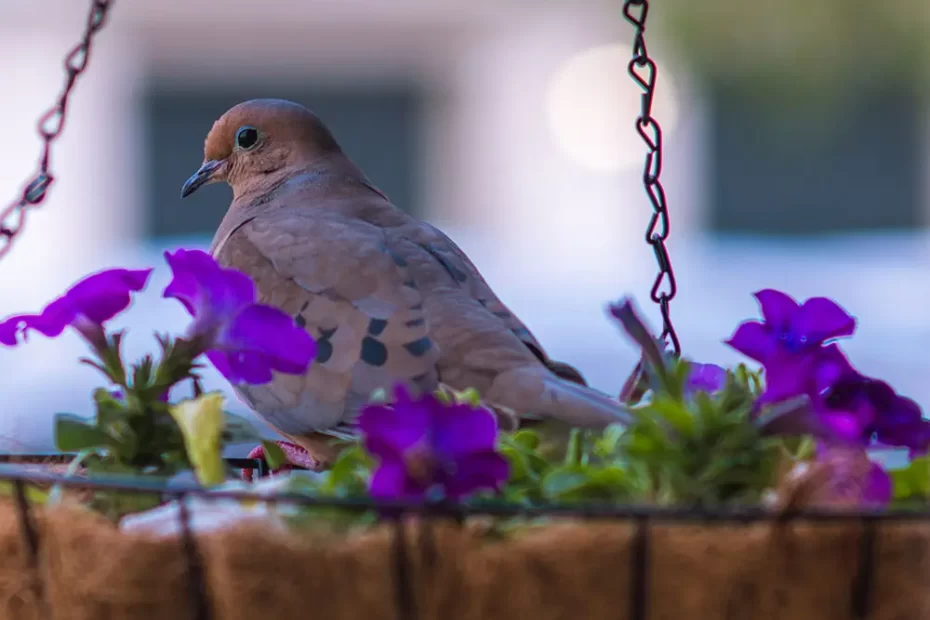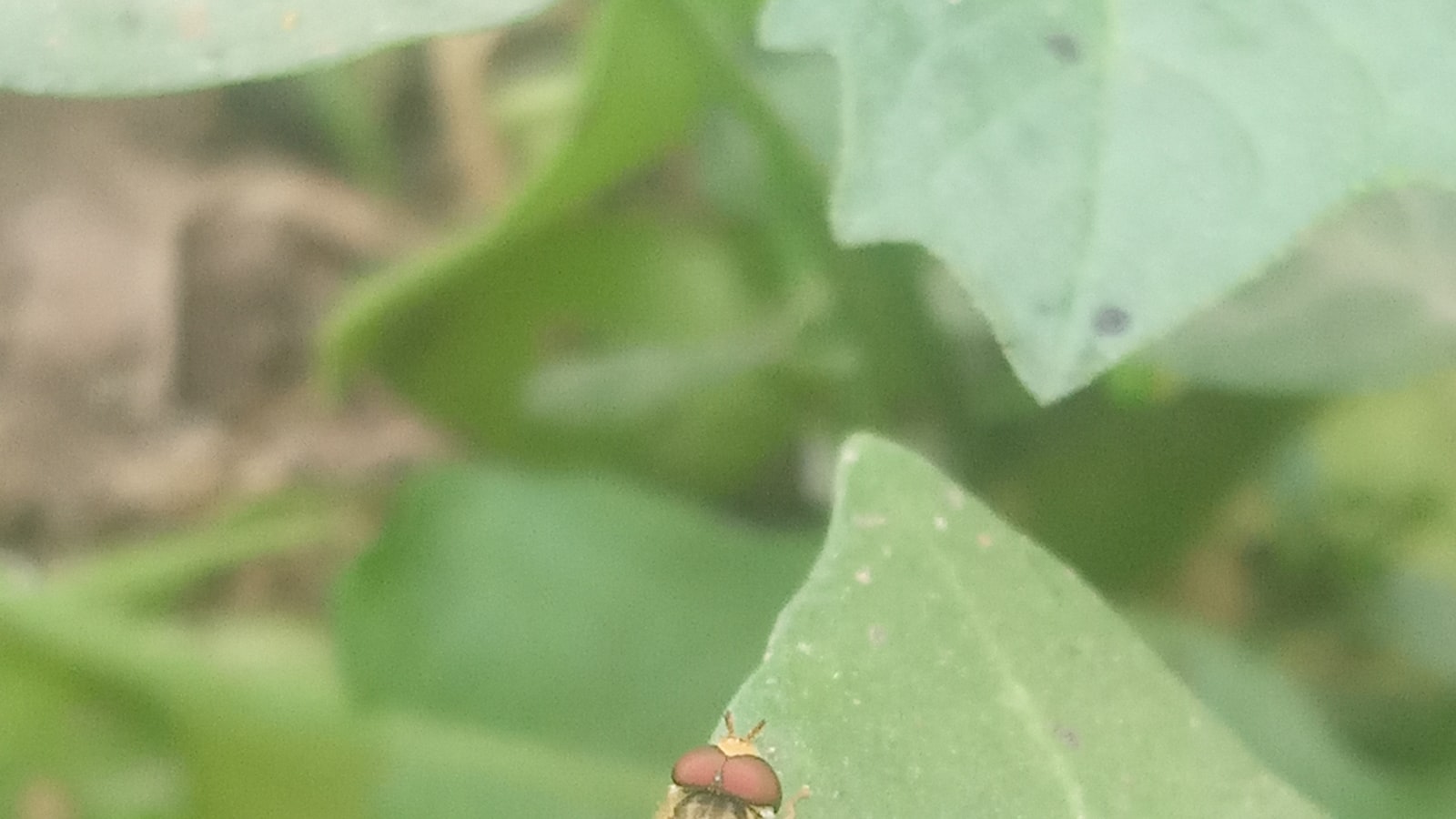In a world where nature’s feathered friends flutter about freely, there’s no denying the delightful presence of birds in our lives. Their melodic serenades and graceful flights often bring a spark of joy to our days. However, when it comes to our beloved potted plants, these enchanting creatures can quickly turn from delightful companions to pesky intruders. Don’t despair, green thumbs! In this article, we will embark on an avian adventure, diving into the fascinating world of pot-dwelling flora and discovering ingenious ways to keep those mischievous birds at bay. So, grab a notepad, channel your inner bird whisperer, and let’s learn how to safeguard our potted treasures from these chirpy culprits!
Natural Deterrents: Protecting Potted Plants from Avian Intruders
With their songs and vibrant feathers, birds can bring life and beauty to any outdoor space. However, if you’re a devoted gardener, you know all too well the frustrations of birds digging up your potted plants, scattering soil, and devouring delicate seedlings. If you’ve been seeking natural ways to keep these feathered friends from wreaking havoc in your garden, we’ve got you covered with some effective tips and tricks. By implementing these deterrents, you can create a harmonious environment where your potted plants flourish and birds peacefully coexist with your green thumb.
1. Visual deterrents: Use reflective objects, such as old CDs or shiny aluminum foil strips, to create flashes of light that will scare birds away.
2. Sound deterrents: Hang wind chimes or install motion-activated devices that emit high-pitched sounds when birds approach, deterring them from landing on your potted plants.
3. Natural predators: Consider placing a decoy predator, like a plastic owl or rubber snake, near your potted plants. This will create an illusion of danger and make birds think twice before approaching.
4. Physical barriers: Implement wire mesh or netting around your potted plants to create a protective barrier that prevents birds from accessing the soil or seedlings.
| Features/Tips | |
|---|---|
| Visual deterrents | Create flashes of light |
| Sound deterrents | Hang wind chimes or use motion-activated devices |
| Natural predators | Decoy owl or rubber snake |
The Art of Repellents: Choosing the Best Defense against Feathered Garden Invaders
Birds can be a delightful addition to any garden, but when they start invading your potted plants, it can become quite frustrating. Luckily, there are several effective ways to keep birds out of potted plants without causing them any harm. One option is to use visual deterrents such as shiny objects, like a CD or aluminum foil, that can create reflections and scare away birds. Another popular method is to use scare devices like owl or hawk decoys. These decoys can intimidate birds and make them think twice before approaching your plants.
For a more natural approach, try using bird-friendly repellents. There are many bird-friendly sprays available on the market that repel birds using natural ingredients like peppermint oil or vinegar. These sprays are safe to use on plants and can help keep birds at bay. Another effective repellent is bird netting. By covering your potted plants with netting, you create a physical barrier that prevents birds from accessing them. It’s important to remember to secure the netting tightly to prevent any birds from getting caught. Additionally, using bird spikes or strips on the edges of your pots can make it uncomfortable for birds to land and roost. These spikes are harmless to birds but effective at discouraging them from perching in your plants.
In summary, when it comes to keeping birds out of your potted plants, there are several strategies you can employ. From visual deterrents to bird-friendly repellents and physical barriers, finding the right method may require a bit of trial and error. Remember to consider the specific needs of your plants and the behavior of the birds in your area. By taking a proactive approach and choosing the best defense against feathered garden invaders, you can create a bird-free haven for your potted plants.
Unveiling Practical Strategies: Bipeds vs. Pest Birds in Container Gardens
It’s a beautiful sight to behold – your container garden, thriving with vibrant blooms and lush greenery. But alas, those mischievous feathered creatures seem to have taken a liking to your precious potted plants. Fear not, for we are here to unveil some practical strategies on how to keep birds out of your beloved container gardens.
1. Visual Deterrents:
- Hang shiny reflective objects such as CDs or aluminum foil strips near your plants. The reflective surfaces will disorient and discourage birds from landing or perching.
- Place artificial predators, such as plastic snakes or owls, near your containers. The sight of these lurking creatures acts as a warning signal for the birds to stay away.
- Utilize scare tape or bird scare balloons that feature large, intimidating eyes. The illusion of being watched deters birds from venturing too close.
2. Physical Barriers:
- Install bird netting over your container garden to create a physical barrier. Ensure it is securely fastened to prevent birds from accessing your plants.
- Place wire grids or mesh cages over individual pots to safeguard them from bird intrusion while still allowing sunlight and airflow.
- Use spikey strips or bird spikes on the edges of your containers. These harmless deterrents make it uncomfortable for birds to land and take up residence.
| Features/Tips | Description |
| High-Pitched Sounds | Install ultrasonic bird repellers that emit high-frequency sounds to deter birds from approaching your container garden. |
| Red Pepper Flakes | Sprinkle red pepper flakes around your pots. The birds dislike the taste and will think twice before feasting on your precious plants. |
| Water Sprinklers | Set up motion-activated sprinklers near your containers. The sudden bursts of water will startle and discourage birds from encroaching on your green haven. |
By employing these strategies, you can maintain the peace and beauty of your container garden while keeping those pesky birds at bay. Remember, being innovative and exploring multiple methods may yield the most effective results. Happy gardening!
Safeguarding Your Potted Paradise: Expert Tips to Keep Birds Away from Plants
Birds can be a nuisance when it comes to potted plants, wreaking havoc on your carefully nurtured greenery. Thankfully, there are several expert tips you can implement to keep birds away from your potted paradise and maintain the serenity of your garden oasis.
Firstly, consider adding visual deterrents to your plants. Reflective surfaces, such as CDs or mirrors, strategically placed near your potted plants, can confuse and deter birds from landing and causing damage. Another option is to hang wind chimes or streamers, which will create noise and movement, scaring off birds. Additionally, try placing scarecrows or decoy predators like fake owls or snakes around your plants to trick birds into believing there is a threat.
Secondly, you can protect your plants by covering them with netting or wire mesh. This will create a physical barrier, preventing birds from accessing your plants and causing harm. Ensure that the netting is properly secured and doesn’t get entangled with your plants. Alternatively, you can attach fishing line crisscrossing above your plants to create an invisible barrier. Birds will be deterred by the confusing obstacle and will be less tempted to land on your potted plants.
| Tips to Keep Birds Away | Features |
|---|---|
| Use Reflective Surfaces | Confuses and deters birds |
| Add Wind Chimes or Streamers | Creates noise and movement |
| Place Scarecrows or Decoy Predators | Tricks birds into believing a threat |
Frequently Asked Questions
Q: Feathered Friends Fouling Your Ferns? Here’s the Scoop on Keeping Birds Out of Potted Plants!
Q: Are chirping songbirds turning your potted plants into aviary rest stops? Fear not! We’ve got some creative tricks up our sleeves to keep our feathered friends at bay without compromising their happiness. So, let’s dive in!
Q: Q1: How can I protect my precious potted plants from pesky birds?
A: Ah, the age-old battle between green thumbs and our fine-feathery friends! Fear not, as one of our favorite ways to keep birds at a beak’s distance is by introducing some harmless shiny distractions. Step into the realm of creativity by placing a few strategically placed reflective objects around your plants. Mirrors, old CDs, and even aluminum foil will create dazzling reflections that will leave birds scratching their heads in disbelief! Remember, a touch of creativity goes a long way in outsmarting our avian adversaries.
Q: Q2: Is there a way to maintain harmony between birds and my beloved flowers?
A: Absolutely! Let’s not forget, our avian acquaintances are significant contributors to our ecosystem, which is why it’s essential to find a balance. Encourage their company without sacrificing your plant’s well-being by creating a dedicated bird-friendly space nearby. Think of enchanting birdhouses, birdbaths, or even hanging bird feeders with irresistible goodies. By providing an attractive alternative, you can redirect their attention, ensuring both flora and fauna coexist happily.
Q: Q3: Any tips for a low-maintenance approach to deterring birds from my potted oasis?
A: Certainly! If you’re seeking a low-fuss approach, consider incorporating texture as your secret weapon! Birds can be finicky about landing on surfaces that they find unpleasant or unstable. Embrace a charm-filled solution by adding decorative pebbles, spiky twigs, or even a scattering of pinecones atop your precious pots. Not only will this deter our feathered friends, but it will also add delightful rustic accents to your plant sanctuary.
Remember, a little creativity can go a long way in maintaining harmony between our potted plants and the vibrant avian world around us. So, arm yourself with these crafty tricks, and bid adieu to birdie invasions while embracing a serene and thriving botanical haven. Happy planting! As we bid adieu to our feathered friends, we hope that this guide has provided you with a plethora of creative strategies to safeguard your precious potted plants. Just remember, dear readers, our intentions are not to instigate a bird vs. human conflict, but rather to strike a harmonious balance in our gardens.
In the tangled web of nature, where fauna and flora intertwine, it is our duty to protect our leafy companions from the relentless beaks and claws that seek to claim them. So, arm yourselves with wind chimes, shiny baubles, and a sprinkle of imagination, for in the realm of avian deterrence, innovation knows no bounds.
And while we may never truly comprehend the true motives of those feathery fellows, we can create an environment that discourages their untidy visits. It is a dance of wits, a choreography of surprises that will leave our potted plants blissfully free from their inquisitive pecks.
So, go forth with determination and zest, equipped with this newfound knowledge, dear readers. Tend to your botanical sanctuaries with love and ingenuity, reminding the birds that there is plenty of nature to share, both in the sky and terrestrial realms.
May your plants flourish, untouched by the whims of our airborne neighbors, and may your creativity continue to flourish like the vibrant foliage that graces your planters. For in this enchanted world we call home, why not let potted plants be a sanctuary for all, to be enjoyed by both avian creatures and human admirers alike?
Until we rendezvous again for another daring exploration, we bid you farewell on this avian adventure. Remember, dear gardeners, it is not only the flight of birds that we seek to curb, but also the endless flight of our imagination that propels us into the realm of endless possibilities.
- When to Put Weed and Feed on Lawn in Michigan - October 16, 2023
- When to Fertilize Potatoes Plants - October 16, 2023
- Can You Plant Clover in the Spring - October 16, 2023
Contents
- 1 Natural Deterrents: Protecting Potted Plants from Avian Intruders
- 2 The Art of Repellents: Choosing the Best Defense against Feathered Garden Invaders
- 3 Unveiling Practical Strategies: Bipeds vs. Pest Birds in Container Gardens
- 4 Safeguarding Your Potted Paradise: Expert Tips to Keep Birds Away from Plants
- 5 Frequently Asked Questions





